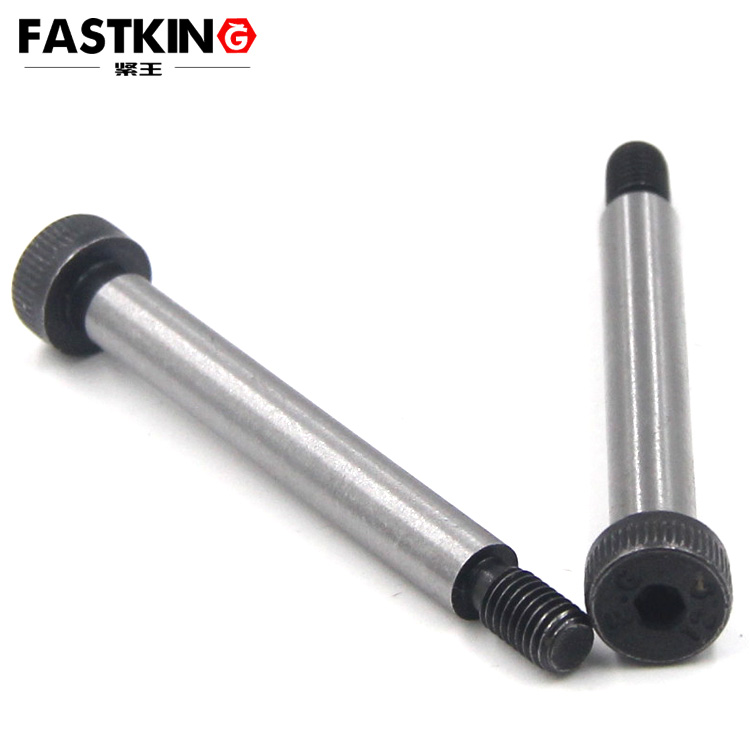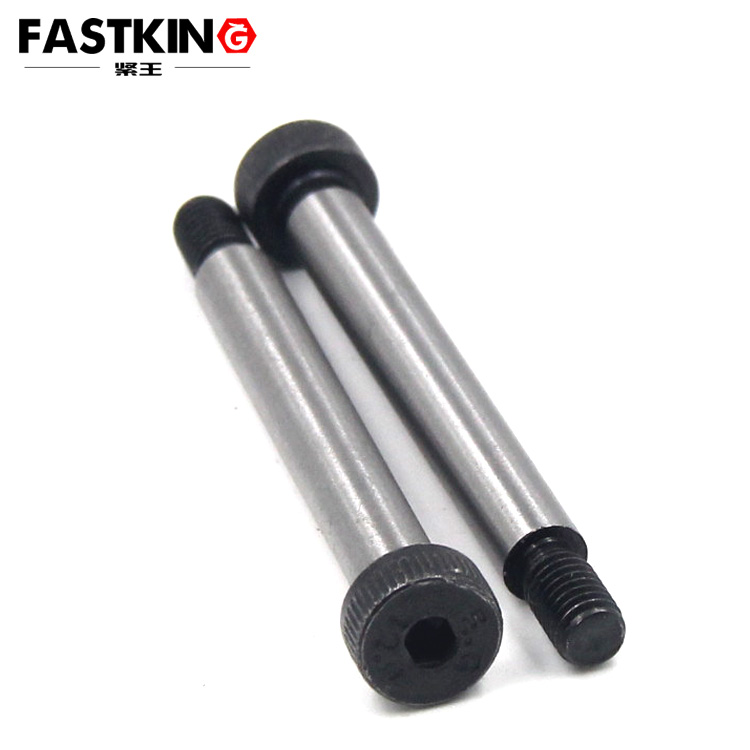I. Structure and Characteristics of Shoulder Screws
Shoulder screws consist of two parts: the threaded shank and the shoulder. The shank is similar to that of ordinary screws, featuring a threaded structure for secure fastening. The shoulder, a cylindrical section with a larger diameter than the shank, serves to position and limit the screw during installation. This unique structure ensures precise positioning during installation, preventing over-tightening.

Shoulder screws are typically made of high-strength alloy steel or stainless steel, offering excellent mechanical properties and corrosion resistance. Their surfaces are often treated with processes like zinc plating or black oxide to enhance durability. These characteristics enable shoulder screws to maintain stable performance even in harsh environments.
Compared to ordinary screws, shoulder screws offer distinct advantages. The shoulder effectively controls installation depth, preventing damage from over-tightening. Additionally, the shoulder provides anti-loosening properties, enhancing connection reliability. These features make shoulder screws widely applicable in precision assembly fields.
II. Proper Usage Methods for Shoulder Screws
Before using shoulder screws, thorough preparation is essential. First, select the appropriate shoulder screw specifications and materials based on the application scenario. Next, check the dimensions and depth of the installation hole to ensure compatibility with the shoulder screw. Clean the installation surface to remove oil and debris, ensuring installation quality.
During installation, follow these steps: Insert the shoulder screw vertically into the installation hole, ensuring the shoulder is flush with the surface. Use appropriate tools, such as a torque wrench, to tighten the screw according to the specified torque value. Control the tightening force to avoid damage from excessive force. After installation, check that the shoulder is fully seated to ensure proper installation quality.

During use, pay attention to the following: Regularly inspect the tightness of the shoulder screw and address any loosening promptly. Avoid using shoulder screws in applications that exceed their load-bearing capacity. Consider environmental factors such as temperature and humidity that may affect the screw's performance. Proper use and maintenance can extend the service life of shoulder screws and ensure stable performance.
III. Typical Application Scenarios for Shoulder Screws
In the automotive manufacturing industry, shoulder screws are widely used in the assembly of critical components such as engines and transmissions. For example, in engine cylinder head installation, shoulder screws ensure precise positioning, maintaining the flatness of sealing surfaces. In transmission housing assembly, shoulder screws effectively control installation depth, ensuring accurate gear alignment. These applications highlight the value of shoulder screws in precision assembly.
In mechanical equipment, shoulder screws also play a vital role. For instance, in CNC machine tool spindle assembly, shoulder screws secure bearing housings, ensuring rotational accuracy. In the frame connections of large presses, shoulder screws withstand significant shear forces, ensuring stable equipment operation. These applications demonstrate the reliability of shoulder screws in heavy-duty scenarios.
In the electronics industry, shoulder screws are equally indispensable. For example, in server chassis assembly, shoulder screws secure motherboards and heat sinks, ensuring stable operation of electronic components. In precision instruments, shoulder screws fix optical components, maintaining measurement accuracy. These applications underscore the importance of shoulder screws in precision electronics.
Although small, shoulder screws play a crucial role in modern industrial production. From automotive manufacturing to mechanical equipment, and from electronics to aerospace, shoulder screws are ubiquitous. Proper understanding and use of shoulder screws not only improve product quality but also enhance production efficiency. As industrial technology continues to advance, the application fields of shoulder screws will expand further, and their importance will become increasingly evident. In the future, shoulder screws will continue to contribute to industrial development with their unique performance.
